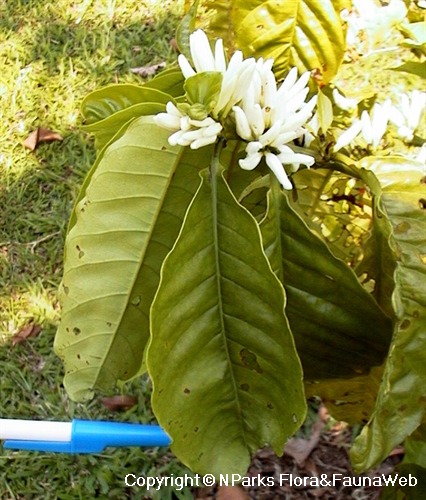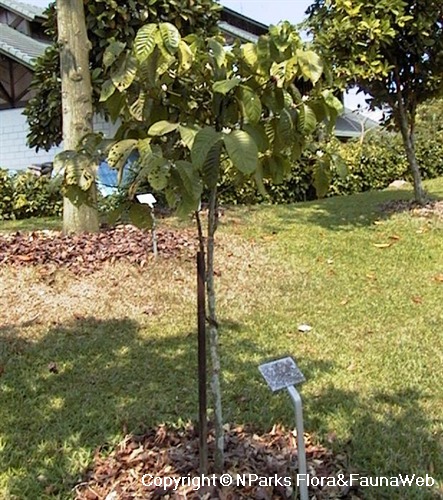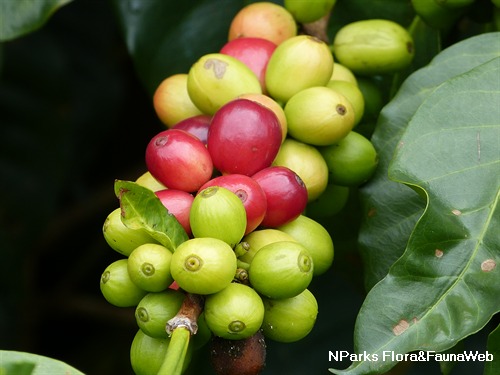
Back
Coffea canephora
| Family Name: | Rubiaceae |
| Synonyms: | Coffea robusta |
| Common Name: | Robusta Coffee, Rio Nunez Coffee, Congo Coffee Tree |
Name
Classifications and Characteristics
| Plant Growth Form | Tree |
|---|
Biogeography
| Native Distribution | Tropical West Africa |
|---|
Description and Ethnobotany
| Growth Form | Small tree up to 12 m tall. |
|---|---|
| Foliage | Green, glossy leaves are elliptic with wavy leaf margin. Leaf blade bulges between veins, resulting in a wrinkled leaf texture. |
| Flowers | White, tubular flowers are star-shaped and 5-lobed. Unlike Coffea arabica flowers, it requires cross-fertilization and cannot self-pollinate. |
| Fruit | Red, glossy fruits are known as berries. |
| Cultivation | This species prefers loamy, well-drained soil which is slightly acidic. In Singapore, it grows better in semi-shade than full sun which is too intense for it. Coffea canephora tolerates higher temperatures than C. arabica which prefers the cooler temperatures found at higher altitudes. |
| Ethnobotanical Uses | Edible Plant Parts : Edible Seeds Others: The seeds are used to produce about 20% of the world's supply of coffee. The seeds of Coffea arabica are used to supply the remaining ~80%. C. canephora and C. arabica seeds are often blended together to make instant coffee. C. arabica is considered to produce coffee superior to that of C. canephora, having better flavor and aroma. However, C. canephora seeds contain more caffeine. |
Landscaping Features
| Desirable Plant Features | Ornamental Flowers, Fragrant |
|---|
Plant Care and Propagation
| Light Preference | Semi-Shade |
|---|---|
| Water Preference | Moderate Water |
| Plant Growth Rate | Moderate |
Foliar
| Mature Foliage Colour(s) | Green |
|---|---|
| Leaf Area Index (LAI) for Green Plot Ratio | 3.0 (Tree - Intermediate Canopy) |
Floral (Angiosperm)
| Flower Colour(s) | White |
|---|
Image Repository
Others
| Master ID | 1526 |
|---|---|
| Species ID | 2819 |
| Flora Disclaimer | The information in this website has been compiled from reliable sources, such as reference works on medicinal plants. It is not a substitute for medical advice or treatment and NParks does not purport to provide any medical advice. Readers should always consult his/her physician before using or consuming a plant for medicinal purposes. |



